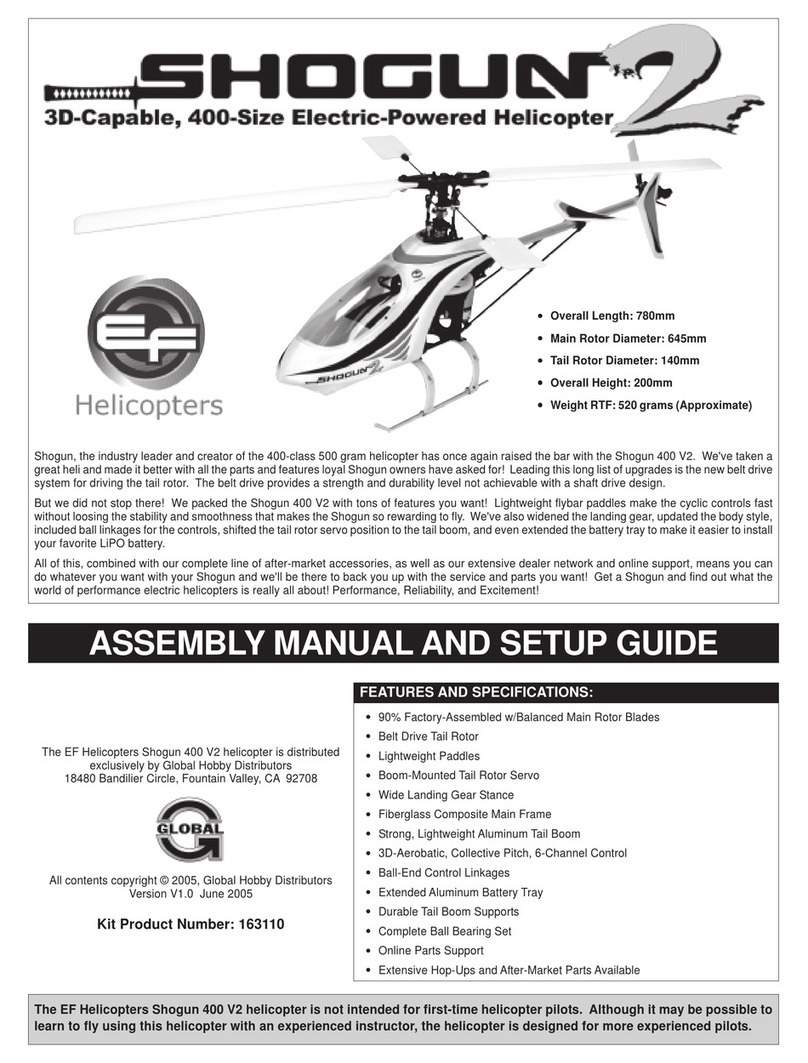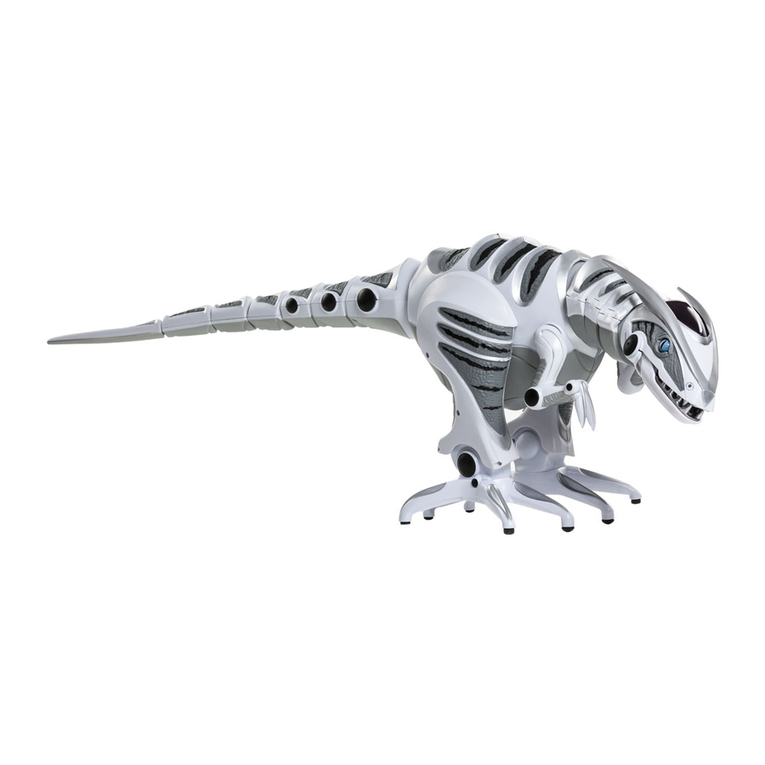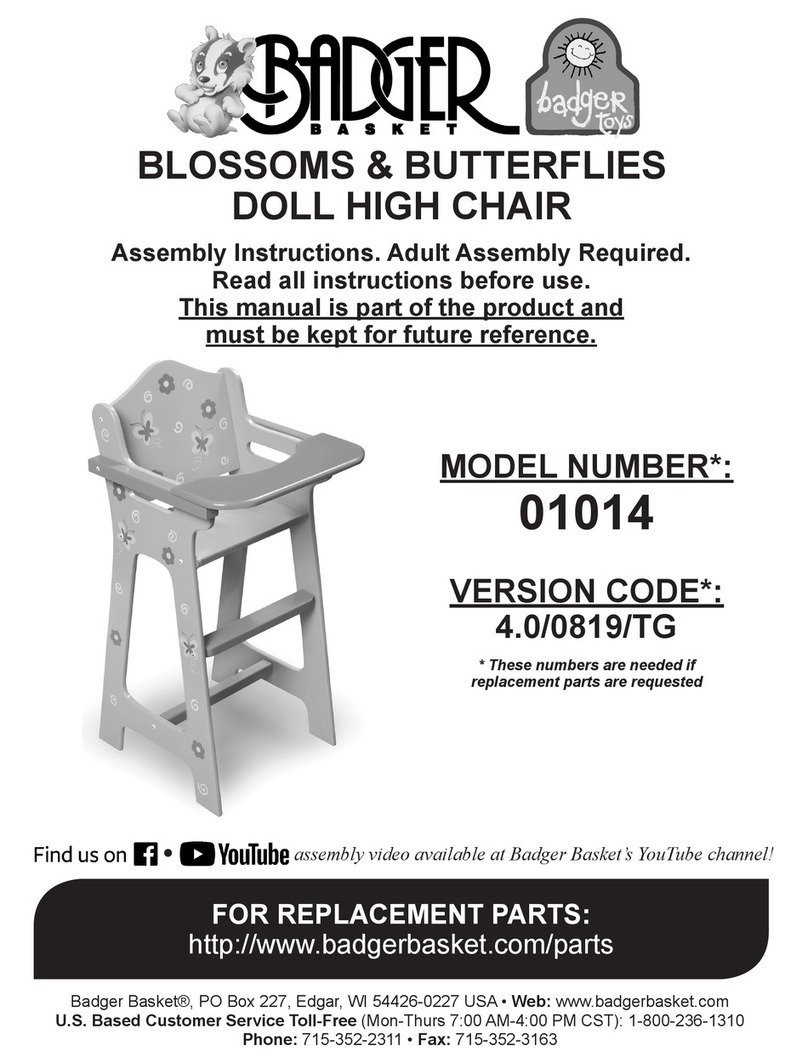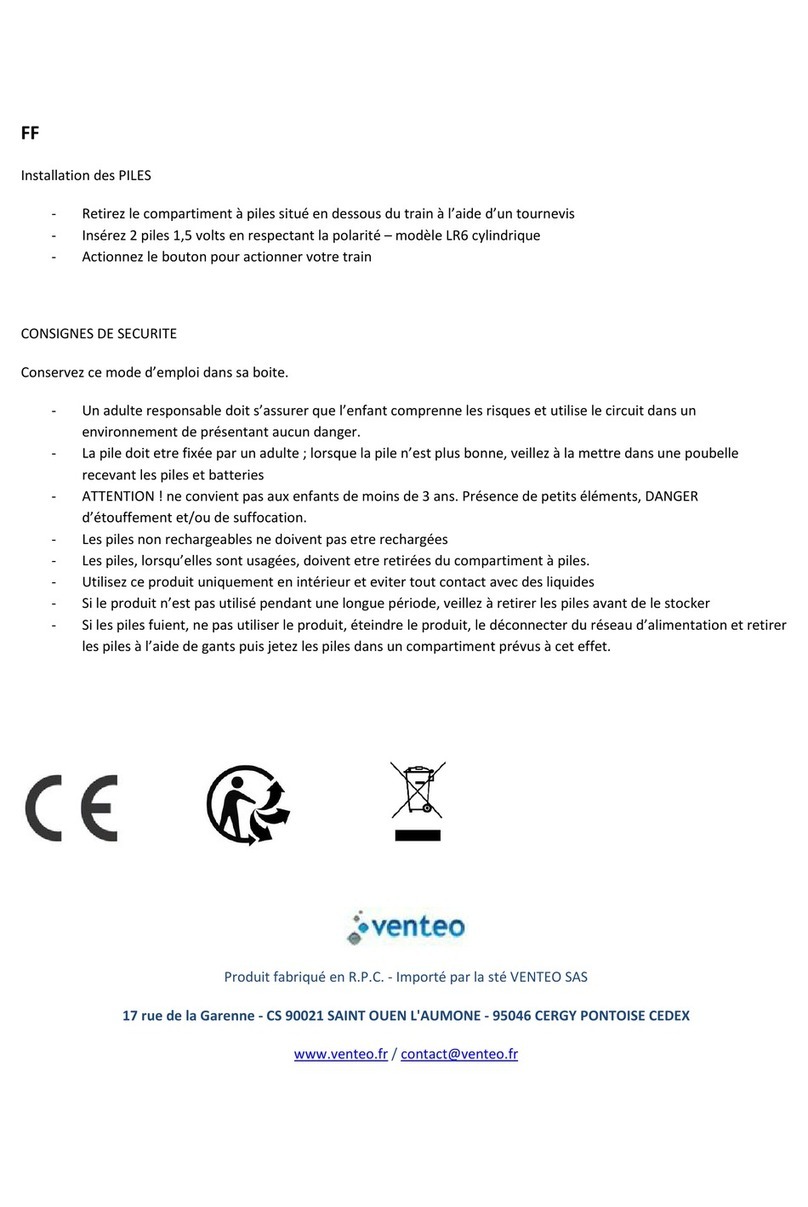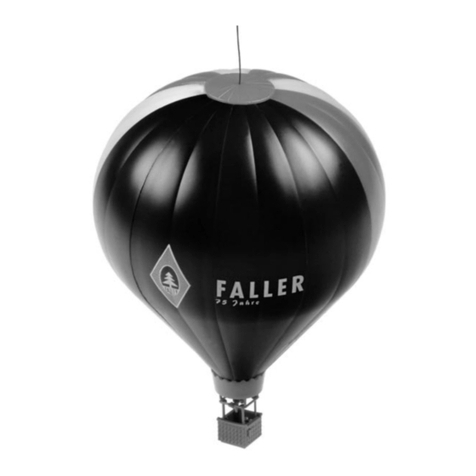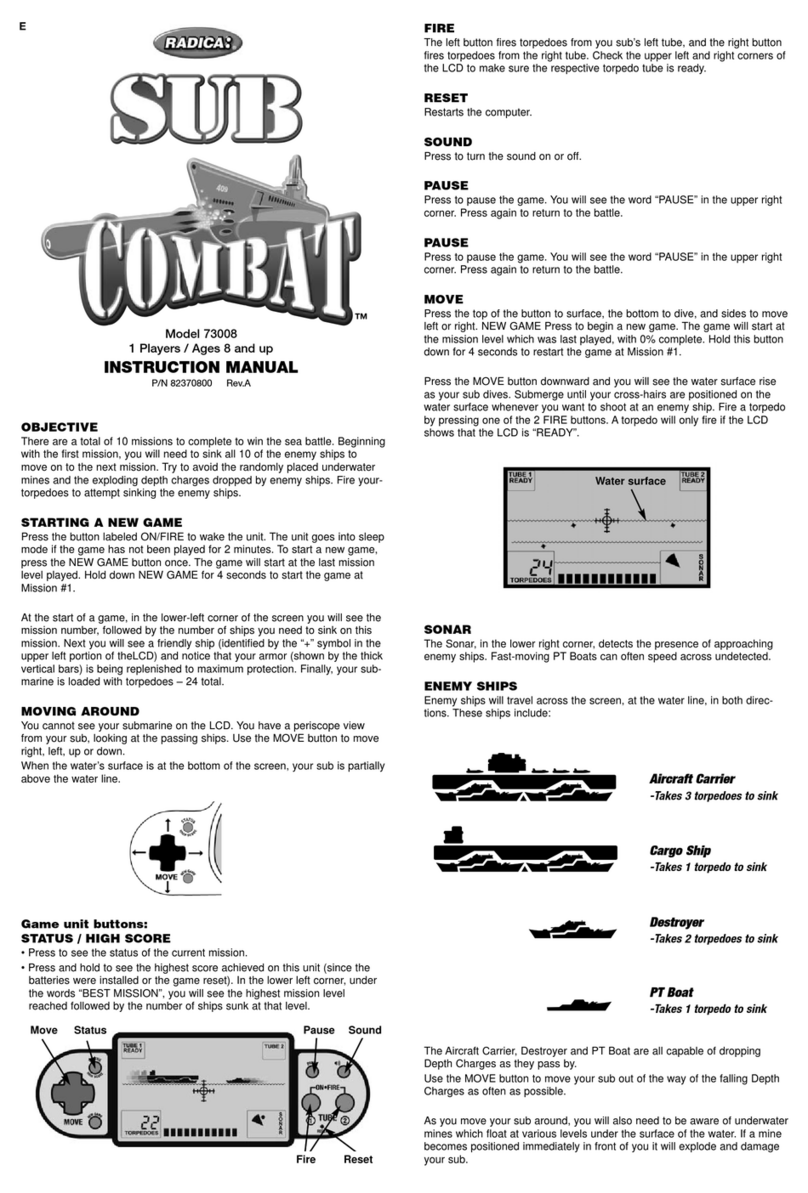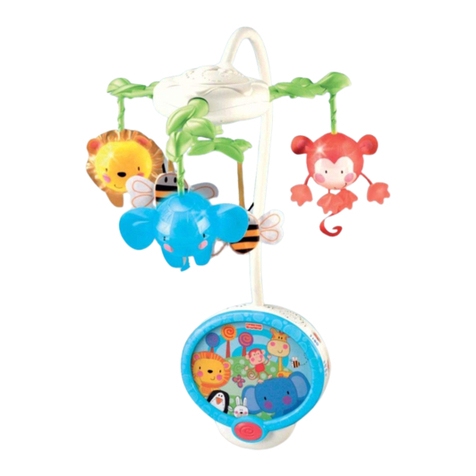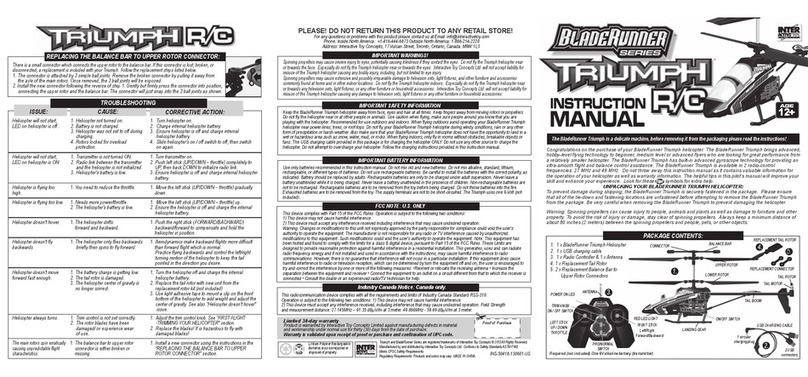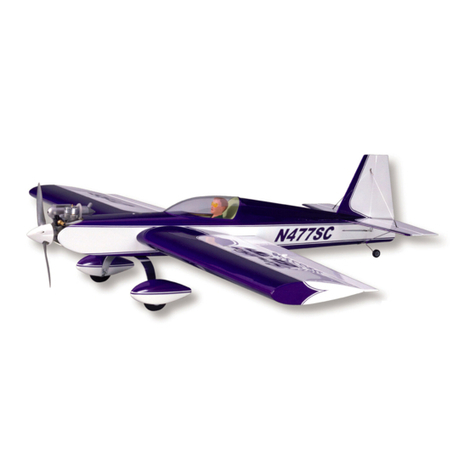EF Helicopter M.A.S.H. Army Rescue Chopper User manual

1Kit Product Number EF163125
Made in China
ASSEMBLY MANUAL AND SETUP GUIDE
M.A.S.H ARMY RESCUE CHOPPER FEATURES
Perfect for Beginners. Fun for Experts, Too
Comes Completely Built. Only Requires Very Basic Assembly
Hover Steadily Under Complete Control
Easier to Fly Than a Typical Helicopter
Fly Forward, Backward, Up, Down, Right and Left
Includes a Rechargeable LiPO Battery and AC Charger
Includes an Extra Set of Rotor Blades
Full-Size Controller with Adjustable Trims and Stick Length
Online Replacement Parts Support
•
•
•
•
•
•
•
•
•
Before beginning assembly of your new EF Helicopters M.A.S.H. Army Rescue Chopper, please read and understand the
warnings listed on the next two pages. Failure to do so could lead to bodily harm and/or injury.
The EF Helicopters M.A.S.H. Army Rescue Chopper is not intended for persons under 14 years of age, unless closely
supervised by an adult.
All Contents Copyright © 2006, Global Hobby Distributors
Version 1 August 2006
DISTRIBUTED IN
EUROPE BY:
Ripmax Ltd.
241 Green Street
Eneld, U.K. EN3 7SJ
DISTRIBUTED IN NORTH
AMERICA BY:
Global Hobby Distributors
18480 Bandilier Circle
Fountain Valley, CA 92708
Main Rotor Diameter: ~ 340mm
Tail Rotor Diameter: ~ 56mm
Overall Length: ~ 425mm
Flying Weight: ~ 235gr (Including LiPO Battery)
Drive System: Two 180 Size Carbon-Brushed Motors
Servos: Two 7.6gr Micros
Battery: 7.4v 800mAH LiPO
Control System: 4-Ch Transmitter and 3-in-1 Receiver
•
•
•
•
•
•
•
•

2
TABLE OF CONTENTS
SAFETY WARNINGS
● Just because the M.A.S.H. Army Rescue Chopper is powered by
electric motors doesn't mean that you shouldn't exercise caution
when ying and operating it. You must use the same amount
of caution during use as when ying and operating a glow-powered
helicopter.
● We strongly suggest that when you rst begin ying the
M.A.S.H. Army Rescue Chopper that you perform only basic
maneuvers, such as hovering, until you are more familiar with the
setup and ight characteristics of the helicopter. This will give
you time to feel comfortable with the way the helicopter reacts to
control inputs and power.
● You must be cautious when plugging the LiPO battery into the
helicopter. Unlike glow-powered helicopters that use a clutch
assembly to allow the engine to idle without the rotor blades
spinning, an electric helicopter features no such clutch. You must
be sure that your transmitter is turned on and the throttle control
stick and throttle trim lever are pulled all the way back before
plugging in the LiPO battery. This will prevent any chance of the
rotor blades spinning and harming you while plugging in the LiPO
battery.
● Do not y your helicopter if another model is on the same
frequency as you. The frequency number is printed on the
transmitter and the receiver.
● Never y your helicopter from the street or at night. Always y
in an open area free of obstructions.
● When ying, make sure any spectators are behind you.
GENERAL WARNINGS
This R/C helicopter is not a toy! If misused or abused, it can cause serious bodily injury and/or damage to property. Fly only in open
areas and preferably at a dedicated R/C ying site. We suggest having a qualied instructor carefully inspect your helicopter before
its rst ight. Please carefully read and follow all instructions included with this helicopter.
●Always turn on the transmitter before plugging in the LiPO
battery and always unplug the LiPO battery before turning off the
transmitter.
● Always unplug the LiPO battery when not ying the helicopter.
● Never cut the receiver antenna shorter or you could lose control
of the helicopter during ight.
● When ying the helicopter, make sure that the transmitter
antenna is completely extended.
● Never attempt to disassemble or modify any of the radio control
system components.
●Always be conscious of the rotor blades. Be careful not to allow
loose clothing to be drawn into the rotor blades.
●Because your helicopter is operated by radio control, it is
important to make sure you are always using fresh and/or fully
charged batteries. Never allow the batteries to run low or you
could lose control of the helicopter.
●Do not allow any of the electrical components to get wet or
electrical damage may occur.
●You should complete a successful range check of the radio
control system prior to each new day of ying, or prior to the rst
ight of a new or repaired model.
●If your helicopter gets dirty, do not use any solvents to clean it.
Solvents may damage the plastic and composite parts.
LIPO BATTERY WARNINGS
●Please refer to LiPO battery warnings on the next page.
RADIO SYSTEM WARNINGS
SAFETY WARNINGS .............................................................................................. 2
CUSTOMER SERVICE INFORMATION ................................................................. 3
LITHIUM POLYMER BATTERY SAFETY WARNINGS ........................................... 3
ITEMS NEEDED FOR FLIGHT AND MAINTENANCE............................................ 4
M.A.S.H. ARMY RESCUE CHOPPER UPGRADE TIP........................................... 4
PARTS IDENTIFICATION........................................................................................ 4
BECOMING FAMILIAR WITH YOUR M.A.S.H. ARMY RESCUE CHOPPER......... 5
TIPS FROM THE PROS.......................................................................................... 6
INSTALLING THE TRANSMITTER ANTENNA AND 'AA' BATTERIES ................... 7
INSTALLING THE FLYBAR ASSEMBLY ................................................................. 7
INSTALLING THE LIPO BATTERY ......................................................................... 8
SETTING UP YOUR M.A.S.H. ARMY RESCUE CHOPPER .................................. 9
GETTING READY TO FLY YOUR M.A.S.H. ARMY RESCUE CHOPPER ............11
PREFLIGHT SETUP AND RECOMMENDATIONS ............................................... 13
FLYING THE M.A.S.H. ARMY RESCUE CHOPPER ............................................ 14
MAINTENANCE AND TROUBLESHOOTING....................................................... 15
M.A.S.H. ARMY RESCUE CHOPPER ASSEMBLY DRAWINGS.......................... 16
REPLACEMENT PARTS ....................................................................................... 19
Visit us on the web at
http://ef.globalhobby.com

3
CUSTOMER SERVICE INFORMATION
Global Hobby Distributors will not disclose the information it collects to outside parties. We do not sell, trade, or rent your personal information to others . Your privacy is important to us.
IMPORTANT INFORMATION ABOUT YOUR EMAIL ADDRESS
In the USA
Global Services
18480 Bandilier Circle
Fountain Valley, CA 92708
Phone: (714) 963-0329 Fax: (714) 964-6236
Email: service@globalhobby.net
Check out our support website at http://globalservices.globalhobby.com. There you will nd public message boards frequented by other EF Helicopters
product owners and the EF Helicopters technical support staff. This is a great place to get quick answers and advice on your new product.
To enable us to better serve your needs, please include your email address with any correspondence you send to us. Your email address will be added
to our Customer Service Database so you will automatically receive free updates and tech notices for your particular product. You will also receive
repair status updates (if applicable) and other important information about your product as it becomes available.
LITHIUM POLYMER BATTERY SAFETY WARNINGS
● ONLY use a charger made for Lithium Polymer batteries.
●Do NOT charge with reverse polarity.
● Do NOT overcharge. Maximum voltage for the LiPO battery must be followed.
● Do NOT over-discharge. NEVER discharge below minimum volts.
● Do NOT discharge at a rate greater than the maximum continuous discharge.
● Do NOT charge at a rate higher than 1C. The LiPO battery's capacity is 800mAH, so the charge rate must be set at 8000mAH (.8A) or less.
● Charge the LiPO battery at 1/2C or less for the rst 5 cycles.
●Check the polarity and then connect LiPO battery to your charger.
●In use, do not over-discharge or exceed maximum discharge.
●The LiPO battery must never exceed 160 degrees Fahrenheit for any reason.
In Europe:
Ripmax Ltd.
241 Green Street
● Do Not leave the LiPO battery unattended during the charging process.
●Always disconnect the LiPO battery from the charger when not in use.
● Always place the LiPO battery on a re-resistant surface during the charging process.
● Never charge the LiPO battery near any ammable material.
● All instructions, warnings and cautions must be followed at all times. Failure to do so can lead to serious injury or re. Instructions
about charging the LiPO battery can be found in the LiPO battery charging section.
● Do NOT use or charge the LiPO battery if it's hot to the touch.
● Do NOT leave the LiPO battery in direct sunlight or in a hot car or storage area.
● Do NOT get the LiPO battery wet or expose it to moisture.
● Do NOT short-circuit the LiPO battery.
● Do NOT leave the battery connected when not in use.
● Do NOT operate or charge unattended.
●Always let the LiPO battery cool between uses and charging.
●Inspect the LiPO battery before each use for swelling or other malformation. If the LiPO battery is damaged, it should be
discarded.
●When handling the battery, do not poke, bend or damage it. The LiPO battery's outer casing is soft and can be damaged.
PLEASE READ THESE WARNINGS IF USING AN AFTER-MARKET LIPO CHARGER
In addition to the warnings listed above, please read and understand these warnings if you will be charging the included LiPO battery
using an after-market LiPO battery charger.

4
Before beginning nal assembly, remove all of the parts from the box and use the photos below to verify that your kit contains all of
the correct parts. If your kit is missing a part, please contact us immediately, using the Customer Service Information on page 3.
PARTS IDENTIFICATION
M.A.S.H. Army Rescue Chopper Transmitter and Antenna Flybar Assembly
7.4V 800mAH LiPO Battery AC LiPO Charger Spare Rotor Blades and ReceiverAdjustment Tool
This section lists the items that are not included in your kit that you will need to y and maintain your new M.A.S.H. Army Rescue
Chopper. As you can see, there's not much to it!
ITEMS NEEDED FOR FLIGHT AND MAINTENANCE
8 Pack 'AA' Alkaline Batteries # 0 and # 1 Phillips Head Screwdrivers Lightweight Machine Oil
M.A.S.H. ARMY RESCUE CHOPPER UPGRADE TIP
The M.A.S.H. Army Rescue Chopper includes an AC wall charger to charge the LiPO battery. This charger allows you to charge the
LiPO battery only where an AC outlet is available. If you'd like to extend your ying time at the eld, we
suggest purchasing a DC LiPO charger. A DC LiPO charger will allow you to charge the LiPO battery
from a 12V DC power source (like your car battery). This means you can charge the LiPO battery at the
ying eld, allowing you to y as many times as you want. We suggest the Pro-Peak Quattro 12V DC
LiPO charger for it's ease of use and low cost.
YOU MUST USE A LIPO-COMPATIBLE CHARGER. DO NOT USE ANY OTHER TYPE OF CHARGER
TO CHARGE THE LiPO BATTERY. SEE LIPO BATTERY WARNINGS ON PAGE 3!

5
BECOMING FAMILIAR WITH YOUR M.A.S.H. ARMY RESCUE CHOPPER
TRANSMITTER SAFETY PRECAUTIONS AND FCC WARNINGS
● Always perform a range check before each rst ight of the day or after a particularly hard landing, or after your radio control system
has been repaired.
●When the green battery status LED bars go out and only the red LED bars are illuminated, replace the transmitter batteries with a
fresh set. If you’re ying when this occurs, land immediately.
●If the radio control system begins to glitch or act unusual, land immediately.
● Before you y, always check to make sure that your frequency is clear. Never turn on the transmitter if someone else on your
frequency is ying at the time. No two radio control systems that are on the same frequency can operate nearby at the same time.
If this occurs, both pilots will lose control of their models. The frequency number is shown on the crystal mount on the back of
the transmitter.
Concerning Transmitter Crystal Replacement:
The Federal Communications Commission (FCC) requires that changes made to the frequency of the transmitter (i.e., crystal) MUST
be made only by an authorized service technician. Any transmitter frequency change made by a non-authorized person may result
in a violation of FCC rules.
Per FCC rules, the transmitter crystal should only be changed by an authorized service technician.
Concerning Transmitter Repairs:
Any repairs that are deemed necessary should be done only by an authorized service technician. Any repairs made by a non-authorized
person may result in a violation of FCC rules.
It is against FCC rules to modify this transmitter for any use other than that intended by the manufacturer.
1 - Antenna Mount
2 - Battery Condition LEDs
3 - Auxiliary Switch (2) - Not Used
4 - Throttle/Yaw Control Stick
5 - Trim Tab (4)
TRANSMITTER FAMILIARIZATION
1
2
3
5
4
6
7
8
9
10
11
12
13
6 - Auxiliary Button - Not Used
7 - Cyclic Control Stick
8 - On/Off Switch
9 - Servo Reversing Switches
10 - DIN Connector for Simulator Adaptor
11 - Crystal Mount
12 - Charge Jack (for Optional NiCD Batteries)
13 - Battery Cover
Upgrading your transmitter to use rechargeable NiCD batteries is easy. All you need to do is purchase 8 'AA' rechargeable NiCD
batteries and a 110V AC overnight charger. This will allow you to recharge the batteries
without removing the batteries from the transmitter and it will save you money in the
long run, since you won't need to purchase Alkaline batteries when they run low.
The transmitter even features a charging jack so that you don't need to remove the
batteries to recharge them.
NEVER ATTEMPT TO CHARGE AND/OR RECHARGE ALKALINE BATTERIES!
TRANSMITTER UPGRADE TIP
CONTINUED

6
M.A.S.H. ARMY RESCUE CHOPPER FAMILIARIZATION
1 - Lower Rotor Blades
2 - Canopy
3 - LiPO Battery Plug
4 - Receiver, Gyro and ESC Combo
5 - Forward Motor
6 - Main Shaft Assembly
7 - Flybar
8 - Flybar Stabilizer Weights
9 - Upper Rotor Blades
10 - Tail Rotor
11 - Horizontal Stabilizers
12 - Tail Skid
13 - Tail Boom Truss Assembly
14 - Rear Motor
15 - Servo (2)
16 - Battery Mount
17 - Landing Skid
1
2
3
4
5
6
7
8
9
10
11
13
14
12
15
16
17
●The servo reversing switches on the back of the transmitter are preset from the factory. For reference, Ch 1 is yaw control, Ch 2
is right/left cyclic control, Ch 3 is forward/back cyclic control and Ch 4 is throttle control. The remaining switches are not used.
If the LiPO battery is plugged in, unplug the motor connectors from the receiver before adjusting the throttle reversing switch.
This will prevent the motors from going to full throttle when the reversing switch is moved.
● You can use your transmitter with a computer-based ight simulator that uses a transmitter adapter with the same DIN-style plug.
● A charge outlet is provided should you wish to use rechargeable NiCD batteries in the transmitter instead of Alkaline batteries. NiCD
batteries and compatible chargers are available separately. See page 4 for more information.
●The two toggle switches and the push-button switch are not used in this application.
●The tail rotor is designed to spin freely. The screw that holds it in place should be tightened, then backed off just enough to allow
the tail rotor to spin freely.
●The rotor blades are designed to move during a mishap. This greatly reduces the chance of breaking them. Because of this,
though, it's important that you periodically check that the rotor blade mounting screws are tight.
●The rotor blades are designed to spin in opposite directions. The upper rotor blades should spin counter-clockwise and the lower rotor
blades should spin clockwise. When replacing the rotor blades, make sure that the leading edges are facing the correct direction.
●For smooth operation it's important that the rotor blades are straight. If they aren't, the helicopter will wobble severely when you
apply throttle.
●During initial power-up and transition to hover, you will need to hold right cyclic to compensate for the torque of the rotor blades.
● Do not cut the receiver antenna shorter. If ying indoors, leave the antenna coiled up under the receiver. If ying outdoors, uncoil
the receiver antenna, wrap it several times around one side of the landing gear legs (making sure that the antenna does not cross over itself),
then tie the remaining length to the tail skid for added range. See page 12 for more information.
● Always make sure you turn on the transmitter rst, before plugging in the LiPO battery. After you're done ying, unplug the LiPO
battery rst, then turn off the transmitter. This will prevent unexpected radio signals from interfering with the radio control system.
●The helicopter does not have an on/off switch. When you plug in the LiPO battery, the receiver and servos will be powered up and
the motors will be armed.
TIPS FROM THE PROS

7CONTINUED
INSTALLING THE TRANSMITTER ANTENNA AND 'AA' BATTERIES
❑Push the antenna down into the molded hole in the top of the
transmitter.
❑Thread the antenna (clockwise) into place and tighten it gently until it
stops.
Do not force the antenna into place or tighten it too strongly.
Doing so could cause damage to the antenna and/or transmitter.
❑ Remove the battery cover from the back of the transmitter by pulling down
on it with one hand while holding the transmitter with your other hand.
❑ Carefully remove the battery holder from the transmitter and unplug
the red connector.
❑ Install 8 fresh 'AA' Alkaline batteries into the battery holder, being careful
to make sure that the polarity is correct for each battery.
If you opt to use rechargeable 'AA' NiCD cells, they can be charged using a standard AC transmitter charger
plugged into the back of the transmitter. Never attempt to charge or recharge Alkaline batteries.
❑ Plug the red connector on the battery holder into the transmitter (the
connector will t only one way), then reinstall the battery holder.
❑ Reinstall the battery cover, making sure it's rmly seated into place.
INSTALLING THE FLYBAR ASSEMBLY
❑ Snap the two pins in the sides of the ybar pivot hub into the top of the
ybar mounting bracket.

8 CONTINUED
INSTALLING THE LIPO BATTERY
❑ Slide the LiPO battery into the battery mount on the bottom of the helicopter.
Notice that the red plug should be toward the front of the helicopter.
Do not charge the LiPO battery before installing it. Charging will be done later.
❑ Snap the ybar ball-end onto the ball on one side of the rotor pivot
assembly.
There is only one ball-link assembly installed on one side.
There is only supposed to be one by design.
❑ Push the LiPO battery completely into the battery mount, ensuring that
it's seated rmly into position.
Do not plug the LiPO battery in yet.
Before turning on the transmitter, always check to make sure that nobody else is ying on the same frequency as you.
This is especially important if you're ying at a designated R/C ying site.
❑ Turn on the transmitter. The LEDs should light up in the green "safe"
area. If they don't, replace the batteries with a fresh set.
❑Make sure that the throttle control stick and the throttle trim lever are
pulled all the way back. This will ensure that the motors won't turn on when
you plug in the LiPO battery.
PRO TIP Always make sure you turn on the transmitter rst, before plugging in the LiPO battery. After you're done ying,
unplug the LiPO battery rst, then turn off the transmitter. This will prevent unexpected radio signals from interfering with the radio
control system.
The helicopter does not have an on/off switch. When you plug in the LiPO battery, the receiver and servos will be
powered up and the motors will be armed. Do not move the throttle control stick forward.

9
Climbing and Hovering: Climbing is controlled by pushing the throttle control stick
on the transmitter (the left-hand stick) forward to turn on the motors. The throttle
is proportional, so motor speed is directly related to control stick position. To lift
off and hover, slowly move the throttle control stick forward until the helicopter lifts
off into a stable hover. To continue climbing from hover, move the throttle control
stick farther forward to increase the speed of the motors.
Descent: Descent is also controlled by the throttle control stick. When you pull the
throttle control stick back, the motors slow down and the helicopter will descend.
Adjust the speed of the motors using the throttle control stick to control the
descent speed of the helicopter.
CONTINUED
❑Plug the red connector on the LiPO battery into the matching red
connector coming out of the receiver.
As a safety feature, the connectors can only be plugged
in one way.
SETTING UP YOUR M.A.S.H. ARMY RESCUE CHOPPER
BASIC OPERATION
Right and Left Turns: Right and left turns are made by moving the cyclic control
stick (the right-hand stick) on the transmitter. When you move the stick to the
right, the right side of the swashplate tilts down, causing the helicopter to turn
right. When you move the control stick to the left, the left side of the swashplate
tilts down, causing the helicopter to turn left.
Forward and Backward Pitch: Moving the cyclic control stick (the right-hand
stick) forward or backward will cause the helicopter to pitch forward or backward.
This allows the forward speed, climb and descent angle, and hover stability of the
helicopter to be maintained. When you move the control stick forward, the front of
the swashplate tilts down. When you move the control stick backward, the back
of the swashplate tilts down.
Yaw control: Yaw is controlled by moving the tail rotor control stick (left-hand
control stick) right and left. When you move the control stick to the right, the nose
of the helicopter moves to the right. When you move the control stick to the left,
the nose of the helicopter moves to the left. Yaw control is used to stabilize the
position of the helicopter's nose.

10 CONTINUED
ROTOR BLADE, FLYBAR AND SWASHPLATE SETUP
❑Unplug the LiPO battery and turn off the transmitter.
For your safety, when adjusting the rotor blades, we suggest unplugging the LiPO battery and turning off the
transmitter.
❑ Gently grab one rotor blade in each hand, then pull out on the rotor blades
to make both of them straight to one another. Do this on both the upper and
the lower set of rotor blades.
If the rotor blades are not straight, the helicopter will vibrate
and wobble excessively when throttle is applied.
❑ Using a Phillips head screwdriver, rmly tighten the four screws that hold
the rotor blades to the rotor blade mounting brackets.
Even after tightening the bolts, the rotor blades will still
be able to pivot under pressure. This is normal. You just don't want the
rotor blades to be loose.
❑ Gently grab each ybar stabilizer weight and pull them out rmly. This will
ensure that the stabilizer weights are out on the very ends of the ybar.
PRO TIP Pulling the stabilizer weights out will not pull them off the
ybar.
❑Turn on the transmitter, make sure that the throttle control stick and trim lever are pulled all the way back, then plug in the LiPO battery.
❑ L o o k c a r e f u l l y a t t h e
swashplate from both the front and
from the side. The swashplate
should be level in both axes. If
the swashplate isn't level, move
the roll and pitch trim tabs on the
transmitter until the swashplate is
level when viewed from both the
front and the side.
❑ Carefully adjust the three control trim tabs on the transmitter so that they
are centered.
The throttle trim tab should be pulled back completely, so
that the motor will not turn on.

11 CONTINUED
CONTROL OPERATION VERIFICATION
❑ With the helicopter sitting on the ground, push the throttle control stick forward only enough to turn on the motors. The rotor blades
should begin to spin at a low rate of speed.
❑ After you're satised that the controls are lined up correctly and operating in the correct direction, unplug the LiPO battery and
turn off the transmitter.
❑ Looking from the front of the helicopter, push the cyclic control stick to
the right. The right side servo linkage should move up (A).
❑Looking from the front of the helicopter, push the cyclic control stick to
the left. The right side servo linkage should move down (B).
If the servo linkage is not moving in the correct direction,
ip the Ch 2 servo reversing switch on the back of the transmitter.
❑ Looking from the front of the helicopter, pull the cyclic control stick back.
The left side servo linkage should move up (A).
❑Looking from the front of the helicopter, push the cyclic control stick
forward. The left side servo linkage should move down (B).
If the servo linkage is not moving in the correct direction,
ip the Ch 3 servo reversing switch on the back of the transmitter.
❑Looking from the back of the helicopter, push the yaw control stick to the
right. The tail of the helicopter should move right (A).
❑Looking from the back of the helicopter, push the yaw control stick to the
left. The tail of the helicopter should move left (B).
If the tail of the helicopter doesn't move the correct direction,
ip the Ch 1 servo reversing switch on the back of the transmitter.
GETTING READY TO FLY YOUR M.A.S.H. ARMY RESCUE CHOPPER
CHARGING THE LIPO BATTERY
As a safety feature, the connectors can only be plugged
in one way.
❑ Plug the red battery connector on the LiPO battery into the red battery
connector on the charger. The charger LED will turn RED, indicating the
LiPO battery is charging.
❑ Allow the LiPO battery to charge. When the charging process is complete, the charger LED will turn GREEN. Once the charging
process is complete, remove the LiPO battery from the charger and reinstall it into the helicopter.
❑ Plug the LiPO battery charger into an AC wall outlet. The charger LED will turn GREEN.
A B
A B
A B

12
CHOOSING YOUR FLYING FIELD
The ying eld you choose should be a large, open eld with grass and a hard surface to take off from. There should not be any
vehicles, buildings, power lines, trees, large rocks or anything else that your helicopter can crash into.
After getting out to your ying eld, but before you y for the rst time, you must range test the radio control system. This will ensure
that the transmitter is "talking" correctly to the helicopter. You should follow this procedure before every rst ight of the day and after
you have a hard landing, crash, or after a repair.
❑Turn on the transmitter, then plug in the LiPO battery.
❑Set the helicopter on the ground and double-check that the transmitter's antenna is fully collapsed. Move the right-hand control
stick on the transmitter several times to check the controls. They should operate smoothly.
❑ Walk approximately 75 feet from the helicopter and move the right-hand control stick on the transmitter once more. Check to make
sure that the controls are operating smoothly at this distance.
RANGE TEST THE RADIO CONTROL SYSTEM
If the helicopter does not range check, don't y! Please refer to the troubleshooting guide on page 15.
CHOOSING A DAY TO FLY
The M.A.S.H. Army Rescue Chopper is designed to be able to y both indoors and outdoors. If ying outdoors, we strongly suggest
ying when there is little to no wind. Winds above 5 - 10 miles per hour will make the helicopter difcult to control.
❑ Remove the body by rst removing the body retaining screw located on
each side of the body.
❑Uncoil the receiver antenna, wrap it several times around one side of the
landing gear legs (making sure that the antenna does not cross over itself), then
tie the remaining length to the tail skid.
❑Reinstall the body, using the screws provided.
Do not cut the antenna shorter. Allow the excess to hang down below the tail skid. If you cut the antenna shorter the
radio reception range of the radio control system will be greatly reduced.

13
PREFLIGHT SETUP AND RECOMMENDATIONS
ADJUSTING UPPER ROTOR BLADE TRACKING
ADJUSTING SERVO TRAVEL AND GYRO SENSITIVITY
❑Servo travel and gyro sensitivity can both be adjusted using the adjustment
tool included with your M.A.S.H. Army Rescue Chopper. By default, servo
travel is set to maximum and gyro sensitivity is set to 50%. We suggest
that you leave these settings exactly as they are.
Servo Travel:
Turning the screw counterclockwise will make the servo arms move less with the same amount of control stick input. Turning the screw
clockwise will make the servo arms move more with the same amount of control stick input. By default, servo travel is set to maximum.
Decreasing the amount of servo travel will result in smoother control inputs, but will also result in reduced control response.
Gyro Sensitivity:
Turning the screw clockwise will increase the gyro sensitivity and turning the screw counterclockwise will decrease the gyro sensitivity.
If when you increase power, the tail of the helicopter moves back and forth or moves quickly in one direction, increase the sensitivity
of the gyro by turning the screw clockwise 1/8th of a turn. Continue to increase the sensitivity until you're satised with the result. It's
not suggested that the sensitivity be set below 50% or the helicopter will be more difcult to control.
When spinning, both upper rotor blades should
be even with each other. They should not
appear to waver or oscillate up and down.
●Double-check that the LiPO battery is fully charged and that the transmitter batteries are good. When the transmitter is turned on
the green LEDs should light up.
● The LiPO battery should be charged and/or "topped off" shortly before ight. The battery will lose some of its charge over time, so
don't charge the LiPO battery the day before, then expect it to produce full power when you're ready to y.
●Double-check that the rotor blades are straight and that the rotor blade mounting screws are tight. Even with the rotor blade mounting
screws tightened, the rotor blades can still pivot under pressure. This is normal.
● Double-check that the ybar stabilizer weights are pulled out to the ends of the ybar.
●Double-check that the trim levers are adjusted so that the swashplate is level and that all of the fasteners are tight.
PREFLIGHT CHECKS
The upper rotor blade tracking on your helicopter is preset from the factory, but you should double-check it before ying for the rst
time and anytime after a crash. The lower rotor blade tracking is xed and therefore is not adjustable.
❑To adjust the rotational plane, disconnect the ball-end from the rotor
head. If the blade with the masking tape was higher when rotating, turn the
ball-end 1/2 of a turn counterclockwise to lengthen the linkage assembly. If
the blade with the masking tape was lower when rotating, turn the ball-end
1/2 of a turn clockwise to shorten the linkage assembly.
❑Reconnect the ball-end and test the rotational plane of the rotor blades
again. Repeat the procedure until satised with the alignment.
❑ Place a 1/2" square piece of masking tape over the leading edge of one
upper rotor blade, near the tip of the rotor blade.
❑Firmly hold the helicopter at eye level, making sure that the rotor blades
are free of any obstructions. Smoothly open the throttle until the rotor blades
begin to spin at a high rate of speed. You will notice that the ybar will be
level once the correct rotor speed is reached. Watch the rotational plane of
the upper rotor blades. The rotational plane of both blades should be the
same (i.e., level). If they are not, adjustments need to be made.
CONTINUED

14
●Look carefully for any damage to the helicopter, especially the rotor blades. If the rotor blades show any signs of damage, they
should be replaced before ying.
● Check to make sure that nobody else is ying on the same frequency before turning on the transmitter and that the transmitter
antenna is fully extended before ying.
FLYING THE M.A.S.H. ARMY RESCUE CHOPPER
Learning to y any R/C helicopter takes patience, time and practice. If you've never own an R/C helicopter before, we suggest
trying to nd someone in your area or at your local ying eld who can help you learn to y. An experienced helicopter pilot can also
test-y your helicopter to double-check that it is trimmed and set up properly. This will make it a little easier for you to learn to y. If
you don't have someone to help you, a good alternative is to practice with a computer-based R/C helicopter simulator. Depending
on the adapter provided with the software you purchase, you may even be able to connect the M.A.S.H. Army Rescue Chopper's
transmitter to your computer.
Below we list basic ight tips that should get you well on your way to ying your helicopter successfully. If you're just starting out, we
suggest ying two battery's worth of ight time per day for about 7-10 days. This will get you familiar with the helicopter without overdoing
it. When learning something new like this, it's often better to do a little at a time, let it sink in overnight, then come back the next day.
Before continuing, we suggest reading the Basic Operation section on page 9 to familiarize yourself with how the different controls
operate and how they affect the helicopter during ight.
● Always y off of a hard surface. If you try to y off of grass, the landing skids and tail will catch in the grass and cause the helicopter
to tip over easily. Landing in grass is no problem, but you should always take off from a hard surface.
● When rst starting out, always keep the helicopter in front of you with the nose pointing away from you (like if you were sitting in
the cockpit). This will make orientation much easier.
● Always remember that you should "y the nose" of the helicopter, not the tail. Getting used to this concept will really help with
orientation and the respective control inputs, especially right and left roll and yaw control inputs.
●When the helicopter's nose is pointing toward you, the roll and yaw controls will seem "reversed." This takes some time to get used
to until it becomes second nature. Imagining yourself sitting in the cockpit will help you get used to this.
●When you throttle up and begin to take off, the helicopter will have a tendency to move to the left. This is normal and is caused by the
torque of the spinning rotor blades. You will need to hold a small amount of right cyclic and right tail rotor to counteract this tendency.
● When you're ready to take off, it's usually more difcult if you slowly advance the throttle and attempt to make many small corrections for a
perfectly smooth climb to hover. It's better to get the helicopter off the ground and out of the wake of the rotor blades as soon as possible.
●Here's our technique for take off: With the helicopter on a hard surface with the nose pointing away from you, advance the throttle
to one-quarter to get the main rotors and the tail rotor spinning. Wait a few seconds for the rotor speed to stabilize, then push the
throttle to half throttle. At half throttle the helicopter will start to get "light" and begin to slide to the left. Apply a small amount of right
cyclic and right tail rotor as described above to keep the helicopter in one place. Apply a couple of more clicks of throttle and the
helicopter will lift off. To achieve a stable hover with the nose pointing away from you, you will need to make minor control inputs on
all of the controls. This takes a lot of practice to learn and get used to. Start by doing just short hovering "hops" and then progress
until you can hover the helicopter in one spot for more than a few seconds. Once you're comfortable with that, practice hovering in
one spot for longer periods of time.
●If you're only a few feet off the ground and you start to get into trouble, pull the throttle all the way back and the helicopter will land
without damage. Remember that you may need to straighten the rotor blades if they hit the ground.
●Once you're comfortable hovering the helicopter with the nose pointing away from you, practice hovering the helicopter sideways,
then at a 45 degree angle, then nally with the nose pointing toward you.
● After you're comfortable hovering the helicopter, you're ready for forward ight. Keep in mind that this is a xed-pitch helicopter.
Altitude is controlled by throttle, so if you want to climb you need to add more throttle and if you want to descend you need to reduce
throttle. Moving the cyclic control stick right and left causes the helicopter to roll right and left. To help keep the helicopter from
"skidding" when you roll right or left, you will need to apply right or left tail rotor depending on the direction you're turning. Moving
the cyclic control stick forward or backward will cause the helicopter to y forward and accelerate or backward and decelerate. The
helicopter can y backwards from a hover by pulling back on the cyclic control.
● Smooth, controlled ight from take off, hover, transition to forward ight, then back to hover and nally landing is a combination of
using all of the control inputs at one time. Again, this takes time and a lot of practice, so don't get discouraged if it takes more time
than you'd like. Keep at it and you'll be ying your M.A.S.H. Army Rescue Chopper like a pro!

15
MAINTENANCE AND TROUBLESHOOTING
INSTALLING THE ROTOR BLADES
❑ An extra set of rotor blades is included and installing them is easy. You
simply remove the old rotor blades and reinstall the new ones, making sure
to tighten the rotor blade mounting screws rmly.
The upper and lower rotor blades are different. On the
bottom of each blade is molded either "A" or "B". "A" are the two upper
rotor blades and "B" are the two lower rotor blades. It's important that you
install them in this conguration.
ADJUSTING THE SERVO LINKAGES
❑In some cases, it may not be possible to level the swashplate in one or both
axes by adjusting the cyclic trim levers on the transmitter. In this situation, you
can adjust the length of the servo linkages by unsnapping the ball-end from
one side, then turning it clockwise to shorten the linkage or counterclockwise
to lengthen the linkage. When snapping the ball-end back into place, make
sure that it's rmly attached.
PROBLEM CAUSE SOLUTION
1) Transmitter does not turn on A) Transmitter batteries depleted A) Replace batteries with new ones
B) Transmitter batteries not installed properly B) Reinstall batteries, double-checking polarity
C) Battery box not plugged into transmitter C) Plug battery box into transmitter
2) Motor(s) do not turn on A) LiPO battery depleted A) Recharge LiPO battery
B) Transmitter batteries depleted B) Replace batteries with new ones
C) Transmitter not turned on C) Turn on transmitter
D) LiPO battery not plugged in D) Plug in LiPO battery
E) Motor wires not plugged in E) Plug in motor wires
F) A crash has damaged an internal component F) Contact local distributor (See page 3)
3) Helicopter is difcult to control A) You are ying in too much wind A) Fly when there is no wind
B) Transmitter batteries depleted B) Replace batteries with new ones
C) LiPO battery depleted C) Recharge LiPO battery
D) Transmitter antenna not extended D) Extend transmitter antenna completely
E) Rotor blades are not straight E) Straighten rotor blades and tighten mounting screws
F) Receiver antenna damaged F) Contact local distributor (See page 3)
4) Helicopter vibrates excessively A) Rotor blades not straight A) Straighten rotor blades
B) Rotor blade mounting screws not tight B) Tighten rotor blade mounting screws
C) One or both motors loose C) Tighten motor mounting screws
5) Helicopter is difcult to trim A) Rotor blades not straight A) Straighten rotor blades
B) You are ying in too much wind B) Fly when there is little to no wind
6) Radio system fails range test A) Transmitter batteries depleted A) Replace batteries with new ones
B) LiPO battery depleted B) Fully charge LiPO battery
C) Receiver antenna damaged C) Contact local distributor (See page 3)
D) A crash has damaged an internal component D) Contact local distributor (See page 3)
7) Controls move the wrong A) Servo direction is reversed A) Adjust servo reversing switches
direction
8) Cyclic trim levers out of range A) More trim required than available from trim levers A) Adjust servo linkages as described above
A - Upper
A - Upper
B - Lower
B - Lower

16
M.A.S.H. ARMY RESCUE CHOPPER ASSEMBLY DRAWINGS
Even though your M.A.S.H. Army Rescue Chopper comes preassembled from the factory, we've provided a complete set of assembly
drawings, just as if you were building your helicopter from a kit. Use these assembly drawings to familiarize yourself with exactly how
your helicopter is assembled. You should also reference these assembly drawings whenever you need to make any repairs or replace
any parts on your helicopter.
1 Flybar Stabilizer Weight Cover 2
2 Flybar Stabilizer Weight 2
3 Flybar Rod 1
4 Flybar Pivot Holder 1
5 Ball-End 6
6 Ball-Linkage Threaded Rod 1
7 Rotor Blade Mounting Bolt 4
8 Main Shaft Bearing 2
9 Outer Main Shaft 1
10 Ball-Linkage (Long) 2
11 Swashplate 1
12 Main Shaft Lock Sleeve 1
13 Aluminum Ball 2
14 Main Shaft Ball Bearing 2
15 Motor 2
16 Main Frame 1
17 Micro Servo 2
18 Servo Arm Set 2
19 Canopy 1
20 Motor Pinion Gear 2
21 Outer Mast Lock Sleeve 1
22 Landing Skid Assembly 1
23 LiPO Battery 1
24 Battery Box 1
25 Self-Tapping Screw 6
26 Pan Head Machine Screw 3
27 Inner Main Shaft 1
28 Motor Pinion Gear 2
1
2
3
4
5
6
7
8
9
10
11
12
13
14
15
16 17 18
19
20
21
22
23
24
25
26
27
28
29
30
31
32
33
34
35
36
37
38
39
40 41 42 43 44 45
46 47 48 49 50 51
29 Lower Main Gear 1
30 Upper Main Gear 1
31 Self-Tapping Screw with Washer 6
32 Self-Tapping Screw 6
33 Ball-Linkage Threaded Rod 2
34 Swashplate Guide Frame 1
35 Ball Bearing 1
36 Inner Swashplate 1
37 Copper Ball 1
38 Self-Tapping Screw 6
39 Main Shaft Sleeve 1
40 Tail Rotor 1
41 Tail Skid 1
42 Horizontal Stabilizer 2
43 Self-Tapping Screw 1
44 Tail Truss Assembly 1
45 Horizontal Stabilizer 2
46 Lower Rotor Blade 2
47 Upper Rotor Blade 2
48 Rotor Blade Holder 4
49 T-Shaped Holder 1
50 Pillar Bolt 2
51 Flybar Mount 1

17
STEP 1
STEP 2
EF165620
EF165620
EF165616
EF165616
EF165619
EF165611
EF165601
EF165601
EF165601
EF165601
EF165601
EF165603
EF165605 EF165605
EF165603
EF165603
EF165617
EF165616
EF165607
EF165610
EF165603
EF165616
EF165610
EF165603
EF165616
EF165605
EF165616
EF165616
EF165616
EF165609
EF165616
EF165608

18
STEP 4
EF165604
EF165617
EF165604
EF165604
EF165617
EF165617
EF165609
EF165606
EF165616
EF165616
EF165609
EF165609
EF165616
EF165616
EF165613
EF165616
EF165615
EF165612
EF165616
EF165612
EF165616
EF165612
EF165612
EF165612
EF165612

19
STEP 6
We stock a complete set of replacement parts for your M.A.S.H. Army Rescue Chopper. Listed below are the replacement parts
that are available along with their respective part numbers for easy ordering convenience. We suggest ordering replacement parts
directly from your local hobby retailer.
If your hobby retailer does not stock EF Helicopters products, you can order replacement parts directly from your local
distributor, using the Customer Service Information on page 3.
REPLACEMENT PARTS
EF165601
Flybar
EF165602
Main Rotor Blades
EF165603
Main Blade Holders
EF165604
Swashplate
EF165605
Ball Linkage Set
EF165606
Swashplate Guide Frame
EF165608
Hollow Shaft
EF165609
Gear Set
EF165610
T-Shape Holder Set
EF165611
Main Frame
EF165612
Tail Truss Set
EF165613
Landing Skid Set
EF165615
Battery Box
EF165616
Screw Set
EF165617
Ball Bearing Set
EF165618
Canopy
EF165619
Servos
EF165620
Motor Set
EF165622
Receiver
EF165623
AC LiPO Charger
EF165624
Transmitter
EF165607
Small Shaft
EF165614
Aluminum Balls
EF165621
LiPO Battery
EF165602
EF165602
EF165602
EF165602
EF165616
EF165616

20
Before returning your M.A.S.H. Army Rescue Chopper for warranty consideration, the status of the unit must be within the Warranty
Information as stated below. Do not return your M.A.S.H. Army Rescue Chopper to the place of purchase. They are not authorized or
equipped to perform warranty work on EF Helicopters products. When requesting warranty service, please observe the following:
●Crash damage will not be covered under warranty. Do not request warranty service for a crash-damaged product.
● Include a note detailing the problem or service you are requesting. Service cannot be provided without this information. Include
your daytime phone number, shipping address and/or email address in the event we need more details pertaining to the service
requested.
● If your product is out of the warranty period you may request an estimate of services at the time you return your product for service.
An omission of this request implies permission to service your product at our discretion.
● Include a method of payment for any service charges.
● Send the unit to us by United Parcel Service, Federal Express or by Insured Mail. Postage is nonrefundable. Send your package to:
RETURNING YOUR PRODUCT FOR WARRANTY CONSIDERATION
In North America
Your EF Helicopters M.A.S.H. Army Rescue Chopper is warranted against manufacturer defects in materials and workmanship for a period of 90 days from the date of
purchase. Warranty service will be provided within 90 days of the date of purchase only if you are able to provide the original or a copy of the original dated sales receipt.
In the United Kingdom/Europe
Your EF Helicopters M.A.S.H. Army Rescue Chopper is warranted against manufacturer defects in materials and workmanship for a period of 1 (one) year from the date
of purchase. Warranty service will be provided within one (1) year of the date of purchase only if you are able to provide the original or a copy of the original dated sales
receipt. This does not affect your statutory rights.
EF Helicopters guarantees this kit to be free from defects in both material and workmanship, at the date of purchase. This does not cover any component parts damaged
by use, misuse or modication. In no case shall EF Helicopter's liability exceed the original cost of the purchased kit.
In that EF Helicopters has no control over the nal assembly or material used for nal assembly, no liability shall be assumed for any damage resulting from the use by
the user of the nal user-assembled product. By the act of using the nal user-assembled product, the user accepts all resulting liability.
WARRANTY INFORMATION
In Europe:
Ripmax Ltd.
241 Green Street
Table of contents
Other EF Helicopter Toy manuals
Popular Toy manuals by other brands

Mattel
Mattel Mega Bloks Hot Wheels Baja Bone Shaker Monster... manual

Wild Hare R/C
Wild Hare R/C Cap 232 Assembly manual

Quattro
Quattro Audi Junior legends car Instructions for use
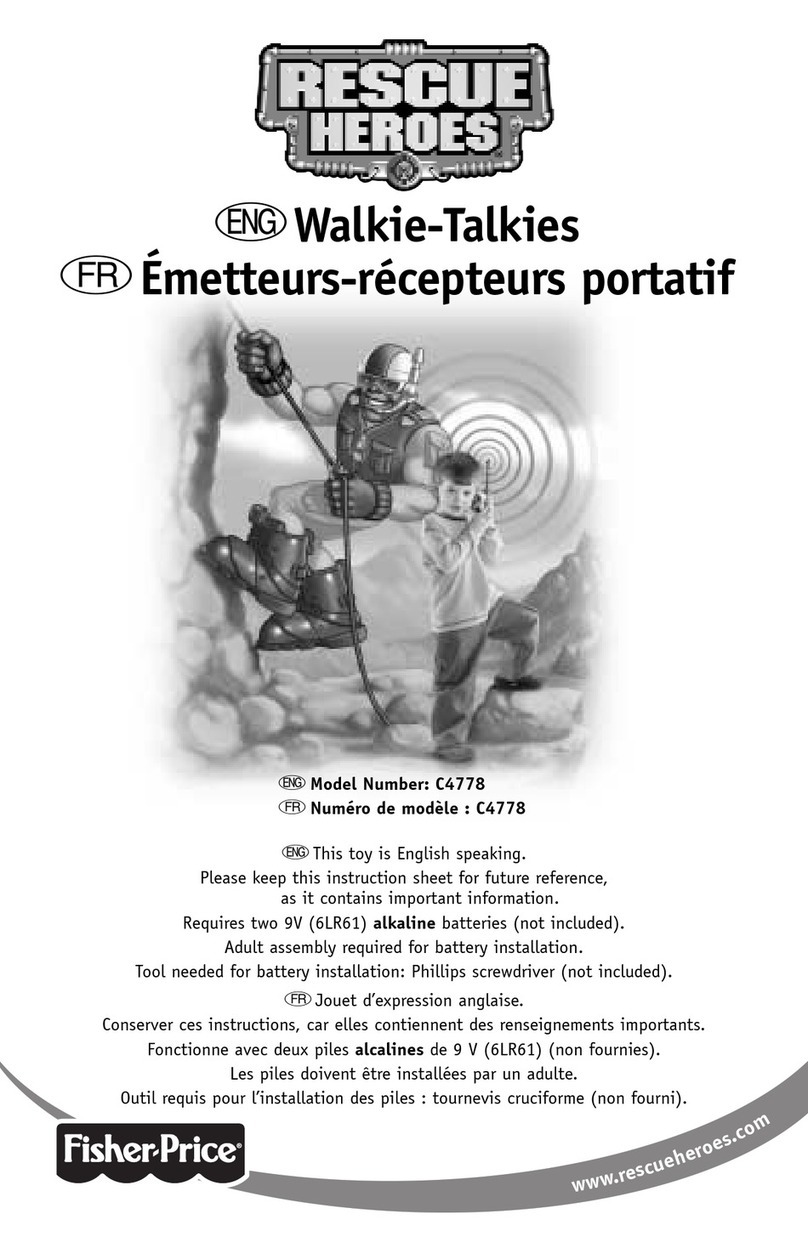
Fisher-Price
Fisher-Price Rescue Heroes C4778 quick start guide

Helion
Helion Lagos Sport operating instructions
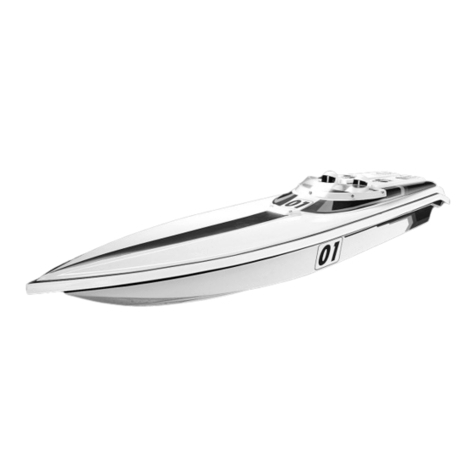
Traxxas
Traxxas Nitro Vee operating instructions

